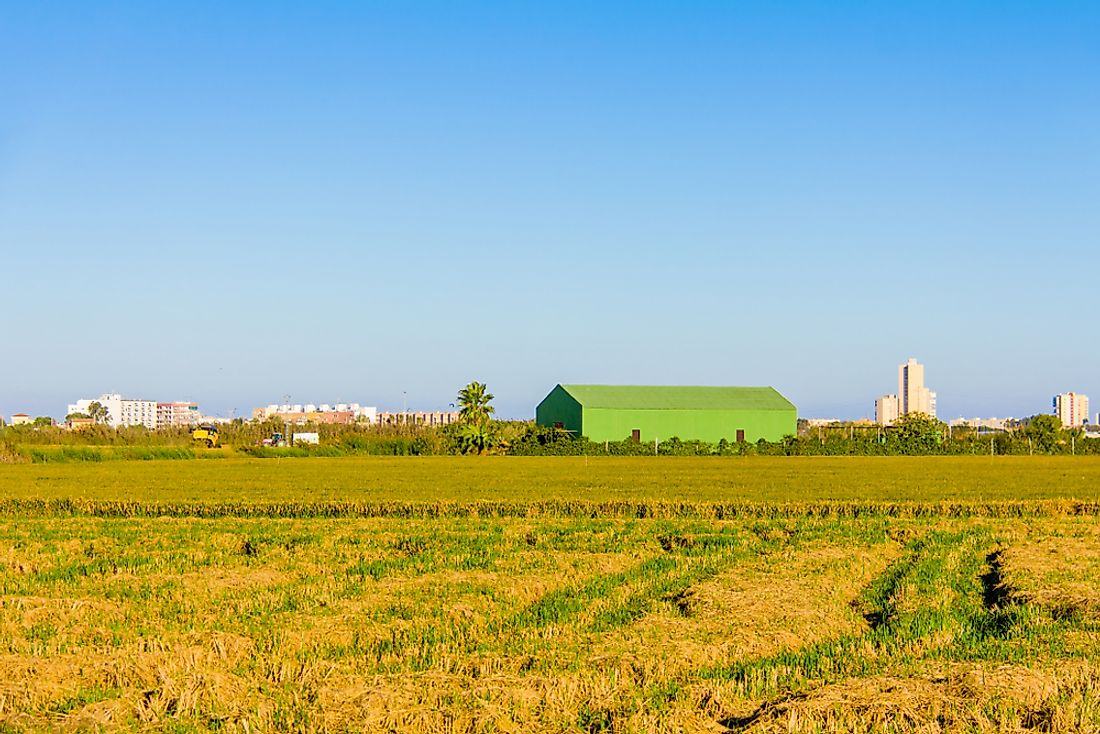What Are The Major Natural Resources Of Spain?

Spain is a southwestern European state that occupies about 85% of the Iberian Peninsula, and it also includes the Canary Islands, Balearic Islands, and Llivia. Spain has the thirteenth biggest economy by GDP and one of the top purchasing power parity on earth. Some of the natural resources in Spain include:
Arable Land
Arable land is one of the primary natural resources in Spain which has contributed to the ever-growing agribusiness industry in the country. Over 27.18% of the total land area in Spain is considered to be arable land while 9.85% is used for permanent crops and about 62.97% is left for other uses. Spain exported agricultural produce worth over £40 billion, in 2015, which accounted for over 3% of Spain’s GDP. Agricultural produce accounted for over 15% of Spain’s total export in 2015. Spain had the twenty-fifth biggest arable land (48,589sq miles) in the world by 2011 right behind Tanzania and Niger.
Over 14,672 sq miles of the cultivated land in Spain is irrigated, and half of this land is used for vegetables, fruit plant, and corn farming. Other plants that benefit from irrigation include fodder grasses, tomatoes, mangoes, potatoes, sugar beets, and strawberries among others. Spain is the top exporter and producer of strawberries in the European Union (EU). Spain is also the biggest exporter of citrus fruits like lemons and oranges in the EU.
Gold
Mining started in Spain during the 25BC, and soon afterward Gold was found in Las Medulas region. Before the Roman conquest, the locals obtained gold from the alluvial reserves. Large scale mining of gold began during the second half of the first century AD. Gold mining intensified after the Roman invasions, and Las Madulas became the largest gold mine in their entire empire. Greed and availability of cheap labor forced the Romans to use various unique mining methods like hydraulic mining. Pliny the Elder claims that the Roman explorations of the region yielded over 3,615,581pounds of gold in 250 years. The country’s bedrock has Kimberlite ore which has gold. Currently, various mining companies are still searching for gold deposits in the northwestern parts of the country. Gold was one of the top five exports from Spain which accounted for about 0.47% of the world’s gold trade by 2013. Germany and France are the principal export destinations of the country’s gold export.
Coal
Spain’s coal deposit is estimated to be over 4,500 million tons, and this includes the accessible reserves of about 1,156 million tons. Spain was the thirtieth top coal-producing state in the world by 2010. Coal provided over 10.9% of all the country’s energy needs in 2015. Coal mining was quite active during the Spanish Civil War, and the union miners suffered a 15-day siege in Gijon and Oviedo in October 1934. Spain has dedicated a museum to coal mining, known as Cercs Mine Museum. The museum was established in 1999 in Sant Corneli colony, Cercs. The government and the labor union agreed on closing 10 coal mines by December 2018. The government decided to pay over €250 million for occupational retraining and early retirements. Over 2.3% of the electric energy of the country was produced by numerous coal plants.
Mercury
Spain is home to the largest and oldest mercury mine in the world which has produced over 250,000 metric tons of mercury in the last 2,000 years. The town of Almaden has the most significant deposits of cinnabar (a mineral which produces mercury) in the world. The Romans used cinnabar as a pigment, but later they used it in alchemy and medicine. Mercury became important during the mid-sixteen century when amalgamation (a process of extracting metal from silver and gold ore) was introduced. Currently, the mines are closed due to the prohibition of mercury mining in Europe and a museum build in its place. The mercury mines were opened to the public in 2006 and visitors can tour the first-level of the mines.
Uranium
Spain has the twenty-first biggest uranium reserves in the world in 2015 with over 33,900 tons. Uranium exploration began in Spain in 1950, and by 1992 numerous uranium reserves were discovered in various geological environments in the country particularly in Salamanca province. Other uranium deposits can be found in Caceres, Badajoz, and Guadalajara provinces. The two leading firms which own uranium mines in Spain include Korea Electric Power and Berkeley Resources limited.
Tungsten
Spain was the ninth top tungsten producer in 2017, after producing about 570 metric tons. The Tungsten deposit in Spain was about 32,000 metric tons by 2016 with most of the country’s biggest mines being found in the western parts of Spain. Barruecopardo mine is one of the biggest tungsten mines in Spain with an estimated reserve of about 10.9 million tons. La Parrilla mine, which is situated in Valladolid province, has an estimated reserve of approximately 30 million tons.
Hydropower
Renewable energy contributed over 37.4% of the total energy used in Spain in 2015. Windpower and hydropower are the primary sources of renewable energy in Spain. The country has constructed numerous dams like Alarcon, Alcantara, and Bolarque among others which produced over 30,828GWh in 2015. The total amount of hydropower reduced from 42,533GWh in 2014 to 30,828GWh in 2015.











